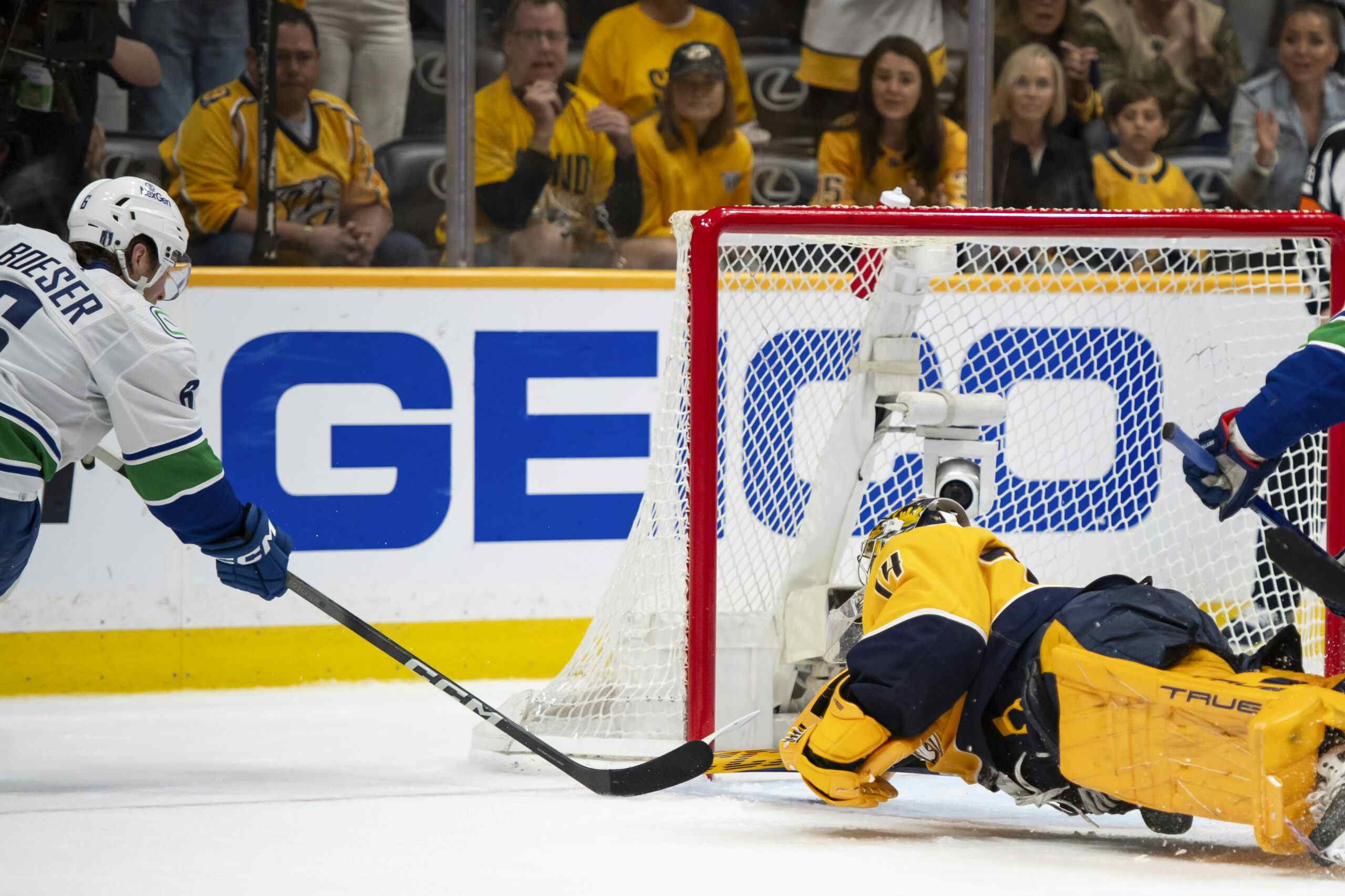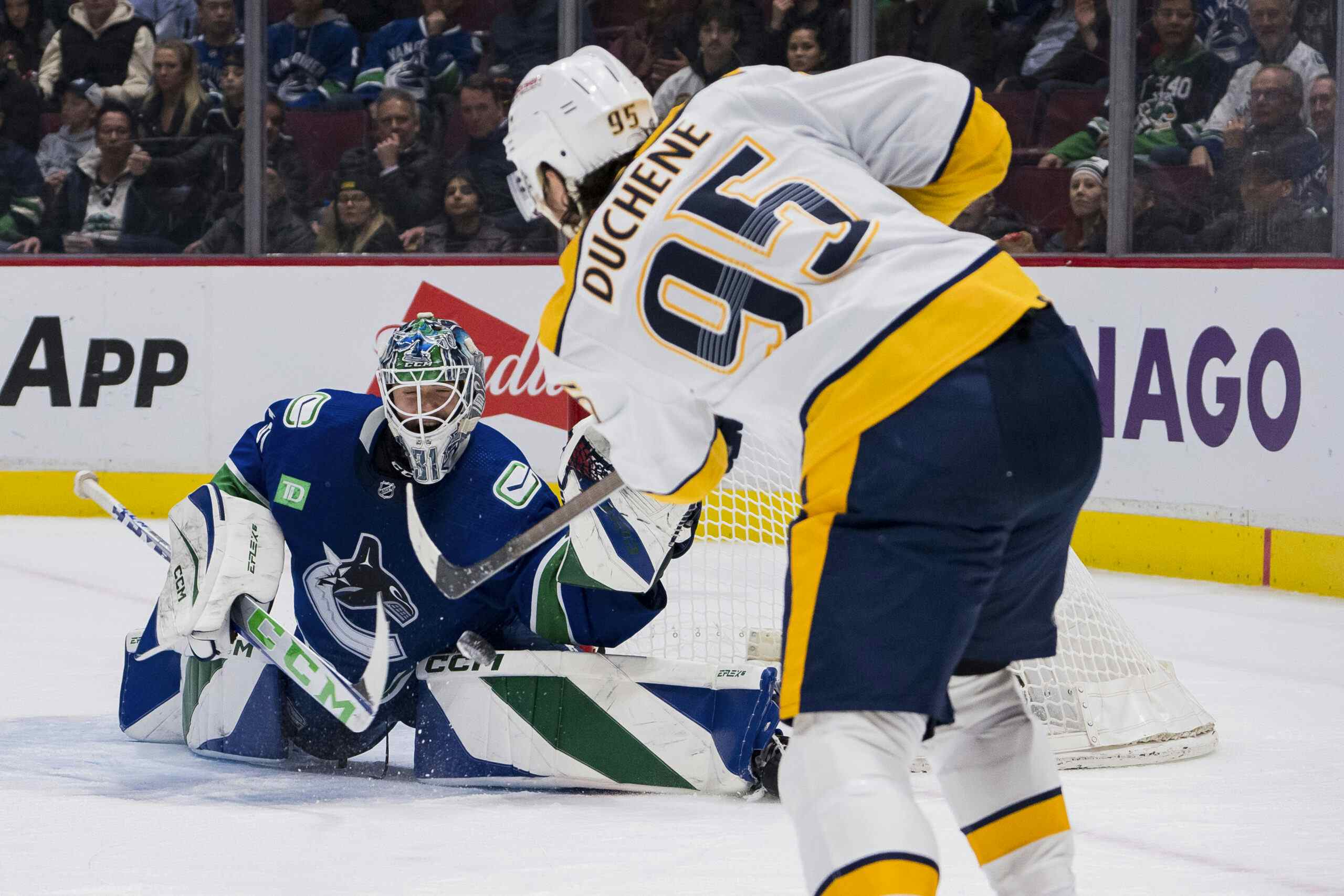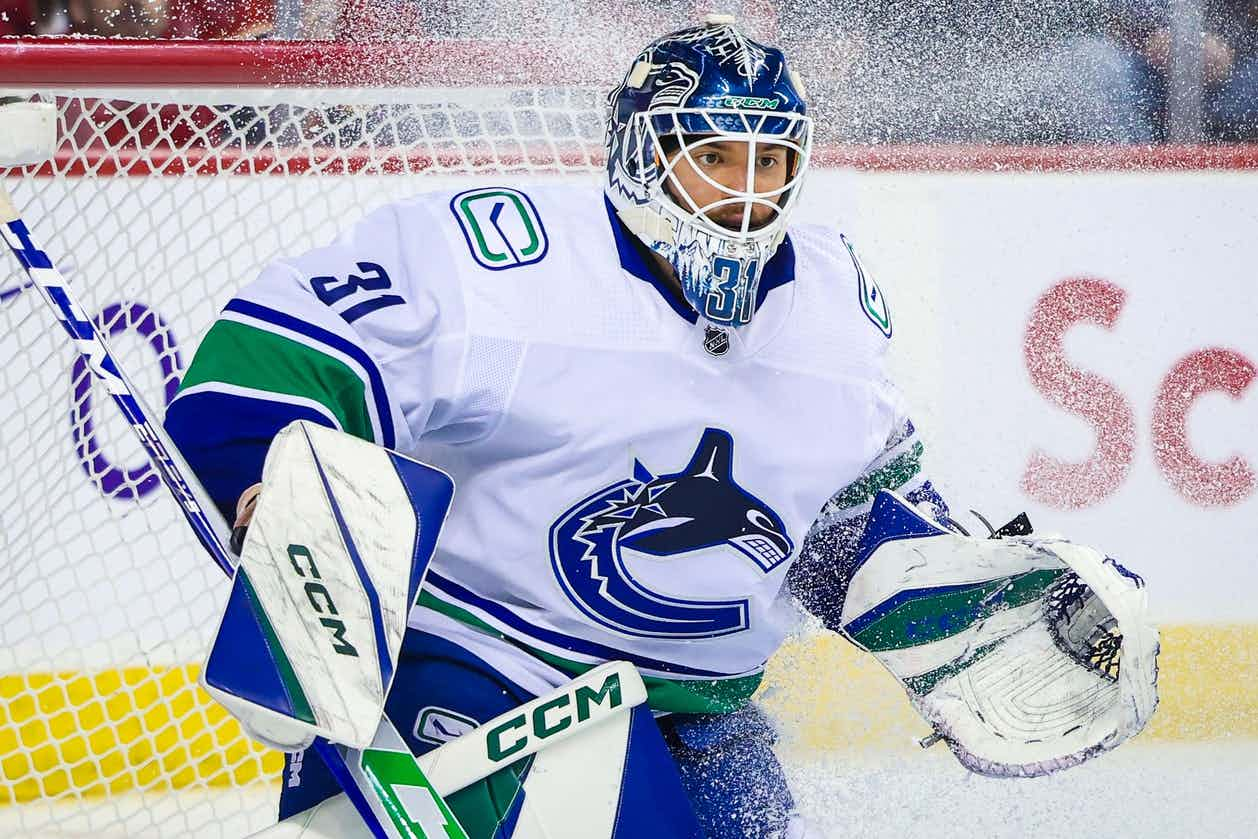Catching Up With Old Friends: Former Canucks Forwards
By J.D. Burke
9 years agoWith another calendar year behind us, I’m able to embark on this year’s version of “Catching Up With Old Friends”. With last season’s embarrassing finish, the Canucks cleaned house before hiring Trevor Linden, Jim Benning, and eventually Willie Desjardins to right the ship.
With a general manager that had no attachment to the players already in place, it seemed only reasonable to expect that there would be changes aplenty in Vancouver. The Canucks didn’t disappoint. Let’s look at some of the players that have departed since and how they are faring in their new environments. I’ll make it a two-part series, with today’s piece focusing on the forwards.
Pour a little liquor and join us after the jump.
Former Canucks Forwards
The criteria for making this list is simple. Any player that, at some point, was either in the Vancouver Canucks lineup or system, between the 2011-12 and 2013-14 seasons, makes the grade – provided they have moved on to another team, of course.
Lets take a look at who makes the cut and their stats from this season.
| Former Canucks Forward | Current Team | GP | G | A | 5v5 Pts/60 | 5v5 ToI/60 | 5v5 On-Ice GD | 5v5 Corsi For% |
| Ryan Kesler | Anaheim Ducks | 41 | 12 | 17 | 1.99 | 13.7 | +5 | 51.3% |
| Cody Hodgson | Buffalo Sabres | 39 | 2 | 4 | 0.7 | 11.7 | -12 | 37.4% |
| Mason Raymond | Calgary Flames | 20 | 5 | 2 | 1.5 | 12.2 | +3 | 43.9% |
| Mike Santorelli | Toronto Maple Leafs | 40 | 9 | 16 | 2 | 13.1 | +5 | 46.2% |
| Derek Roy | Edmonton Oilers | 30 | 2 | 10 | 1.8 | 11.1 | +2 | 51.7% |
| Max Lapierre | St. Louis Blues | 38 | 2 | 6 | 1.5 | 8.6 | -3 | 41.9% |
| Dale Weise | Montreal Canadiens | 36 | 4 | 10 | 2 | 10.7 | +9 | 46.8% |
| Antoine Roussel | Dallas Stars | 38 | 9 | 10 | 1.9 | 12.3 | +1 | 49.4% |
| David Booth | Toronto Maple Leafs | 19 | 1 | 1 | 1 | 9 | -3 | 43.8% |
| Manny Malhotra | Montreal Canadiens | 37 | 0 | 1 | 0.2 | 8.5 | -6 | 32.8% |
| Andrew Ebbett | Pittsburgh Penguins | 16 | 1 | 4 | 2.3 | 8.2 | +1 | 46.2% |
| Steve Pinizotto | Edmonton Oilers | 17 | 2 | 2 | 1.5 | 7.7 | +1 | 46.5% |
This table provides an interesting look at the turnover from the Mike Gillis to Jim Benning era. The most productive ex-Canuck of the previous regime is probably Antoine Roussel, and it seems wholly unfair to blame Gillis for his departure. Literally nobody saw his NHL proficiency coming, save for maybe the Stars scouting staff. That, and he was only sort of Canucks property anyways.
The short list of players sent on their way by Benning has some quality pieces in Santorelli and Kesler; Booth rounds out the group. I would advise against holding too large a grudge against Benning, though, as circumstances well beyond his control played a key role to guarantee Kesler and Santo’s tickets out of town. The David Booth buyout, which I was skeptical of at the time, has proven one of Benning’s more prudent moves.
We’ve just barely scratched the surface, though. Boxcar stats can only tell you so much and this is especially true of depth players. Lets take a deeper look at how these ex-Canucks are doing.

Save for Booth’s lonely spot at the bottom of this graph, there’s not a lot going on here that I wouldn’t have expected. Kesler has taken on the shutdown center role with his new club, the Anaheim Ducks. Meanwhile, there is a plethora of solid depth pieces all joining forces in the middle of this graph; I’m not overly upset about their departure though, based solely on the fact that Vancouver hasn’t any more room for depth pieces anyways. It’s interesting to see Manny Malhotra getting deployed in an eerily similar fashion to what we became accustomed to seeing in Vancouver.
Derek Roy
Vancouver traded for Roy at the 2012-13 deadline looking to add secondary scoring. The undersized forward was sent back and forth from Kesler’s wing to center on the third line. Roy fit seamlessly with the Canucks right off the hop and developed instant chemistry with his teammates. His occasional partnership with Chris Higgins proved especially potent. In limited action, Roy and Higgins posted a 61% Corsi For. In the playoffs, though, Roy was a complete no-show in the Canucks first series loss to the San Jose Sharks.
That off-season the Canucks let Roy take his services to St. Louis in free agency, fulfilling the “rental player” prophecy. During his time with the Blues, Roy provided stability and solid possession play in a tertiary scoring role, primarily from the third line. This feat is even more impressive, when considering the possession anchors that accompanied Roy for most of his time in St.Louis. It wasn’t enough to keep Roy in town, as the Blues allowed his one-year contract to run its course without an extension.
When the first wave of free agency came and went, Roy was left without a contract. It looked like Roy’s NHL future was in jeopardy, until the Preds took a one-year flyer on him. In his brief stint with the Predators, Roy failed to crack their top-nine and quickly earned a spot in Peter Laviolette’s doghouse. Originally, Nashville sent Roy through waivers to their farm team. Upon clearing, Roy was traded post-haste to the Oilers in exchange for Marc Arcobello.
Ryan Kesler
At his best, Kesler was capable of shutting down the opposition’s best lines on a nightly basis while sacrificing little in the way of his own offensive production. At his worst, Kesler was weighed down by injuries and turned into half the player this city knew and loved. By the end of his tenure with Vancouver, Kesler was as reviled and he was adored. His trade demand did much to secure the former of those two, and will taint his legacy for years to come I am sure.
In his short time with the Ducks, Kesler has re-emerged as a premier shutdown center. Kesler is playing primarily on the Ducks second line with a revolving door of wingers, but he is most commonly with Matt Beleskey and Jakob Silfverberg. Most encouragingly for Ducks fans, Kesler has found a way to reignite his scoring touch of years past. His 1.9pts/60 is the highest even strength scoring rate Kesler has posted (in a full season) since 2010-11.
That Kesler’s body had so much mileage on it played a large role in softening the blow of what many considered a poor return. I was skeptical of that logic to begin with and Kesler’s hot start has validated that stance thus far. It will be interesting to see if Kesler continues this pace into next season, or if he succumbs to injuries once again.
Cody Hodgson
It’s been quite the fall from grace for Hodgson. Just three seasons ago, the Canucks former first round pick found himself a spot in Vancouver’s middle six and was producing accordingly. Much of this was due to soft deployments, which we now know were part of an effort to increase his trade value. When Hodgson’s value was at its peak, they settled for Zack Kassian from Buffalo in return.
His tenure in Buffalo started off promisingly enough. In his first season with the Sabres, Hodgson was producing at a second-line level in a much less sheltered role. While Hodgson’s glaring defensive issues prevented him from driving play at even a respectable clip, his offensive contributions and ability to draw penalties made him valuable all the same.
Since then Hodgson has seen his offensive production fall off a cliff and his ice time diminish accordingly. This season, Hodgon’s even been sent to the press box as a healthy scratch. Defensive shortcomings have dogged Hodgson his entire NHL career and this year is no different. With the undersized centre on the ice, Buffalo is surrendering nearly 35.3 shots/60. That’s bad. Bottom thirty in the league bad.
It’s becoming increasingly clear that both Vancouver and Buffalo lost in the Hodgson-Kassian deal, should such a thing be possible. To Vancouver’s credit, they’ve at least escaped without a contractual albatross around their necks. Hodgson is slated to make $4.25 million against the cap until the 2019 off-season. Have fun with that, Tim Murray.
Mason Raymond
There weren’t many tears shed in Vancouver when the Canucks let Raymond loose in free agency. While Raymond produced at a near-elite level for second line forwards and was a dominant possession player in his peak years, he left many in this city wanting more. Of his many shortcomings, none were more infuriating than his penchant for vanishing every post-season.
The two clubs who’ve employed him since needn’t worry of this, though. In his first post-Canucks season, Raymond was left hanging in free agency (after a rumoured deal with the Calgary Flames fell through) before the Toronto Maple Leafs offered him a PTO. Raymond shined in camp and earned a one-year contract for his efforts.
In his one year with the Leafs, Raymond played well in a secondary scoring role. The Leafs were either unable to keep Raymond though, as he signed a three year deal with the Flames last off-season. Raymond has struggled to stay healthy as a member of the Flames, having already missed six weeks with a shoulder injury. When healthy, Raymond hasn’t quite been himself. The production rate is there, but much of this is percentage driven by his 14.3sh% at even strength. His possession game has fallen off too.
Mike Santorelli
Losing Santo this off-season was more or less expected, but a roster casualty that stung all the same. Both the Canucks middle-six centres are playing one spot higher than they should, and having Santorelli to add to the Canucks offense by committee approach would surely have been useful. It would also have bought Bo Horvat another year of development in the OHL and a spot on Canada’s gold medal winning World Junior roster.
Of course, it wasn’t to be. Too many cooks in Vancouver’s kitchen and Vancouver’s vision of Nick Bonino entering the freshly departed second line center role made sure of this. Santorelli would surely have challenged Bonino for this spot. The Leafs scooped Santorelli early in free agency on a one-year deal for $1.5 million.
Santorelli’s stock has risen quickly in Toronto, resulting in a regular gig on the second line. His even strength production is similar to where it was last season with Vancouver, although I’d imagine much of this is due to obscenely high percentages that make for a 105.1 PDO. His Corsi Rel. of +2% has also provided a much needed boost to Toronto’s moribund possession numbers. Look for Santorelli to cash in this summer.
Antoine Roussel
Can you imagine the disdain Vancouver would engender icing a line with Max Lapierre, Antoine Roussel, and Alex Burrows? This could have very well been a reality for Vancouver, had they not lost Roussel to the genial scouting of the Dallas Stars just two off-seasons ago.
Since joining Dallas, Roussel has refined his game as one of the peskier bottom six forwards the NHL has to offer. Beyond his abilities as a shift disturber, Roussel is a valuable possession player with the ability to contribute offensively from a checking role. When called upon, Roussel hasn’t looked out of place on the Stars second line, either. Oh, what could have been.
David Booth
When Vancouver acquired Booth, they envisioned a 30-goal scoring power forward coming into their ranks. Perception and reality were miles apart, as Vancouver inherited a shell of Booth’s former self. Injuries played a key role in his deteriorating offense, but so too did some of the worst on-ice shooting percentages in the league, coupled with just awful luck.
The savvy Maple Leafs picked up on the castoff winger and signed him to a one-year deal at $1.1 million over the summer. Unsurprisingly, Booth injured himself in training camp. Since rejoining the Leafs, Booth has struggled to find his game and is a regular fixture on the fourth line. The bible thumping winger has just the two points to show for his 14-games with Toronto, but to his credit, hasn’t been a possession liability on a team riddled with them.
Max Lapierre
For the better part of Alain Vigneault’s tenure, Vancouver struggled to find a reliable anchor to their fourth line. In Max Lapierre, the Canucks thought they had found their guy. His game eventually tailed off though, due in large to injuries, and Vancouver replaced him with Brad Richardson.
Since then, Lapierre has been a stable of the St. Louis Blues fourth line. In grueling deployments, Lapierre has proven serviceable, if unspectacular, for St. Louis. More or less what you’d expect of the pesky centre.
Dale Weise
Dutch Gretzky, we hardly knew ye. As a member of the Canucks, Weise was a defensively sound winger capable of filling a checking role on the fourth line and playing on the penalty kill. His speed made also allowed for his joining the top six on rare occasions. The speed was there, but everything else necessary to succeed in an offensive role was not.
After vocalizing dissatisfaction with his role on the Canucks under John Tortorella, Weise was shipped to the Montreal Canadiens for Raphael Diaz. Since joining the Habs, Weise has played well in a prescribed fourth line checking role. His 10-points in 32-games this season has been a nice and unexpected addition to the Habs secondary scoring to boot.
Manny Malhotra
After his unceremonious departure from Vancouver, things looked bleak for Malhotra. His gruesome eye injury had not only turned him into a shadow of what he used to be as a player, but it also proved a health concern that Vancouver couldn’t overlook. After being forced onto IR by Mike Gillis, Malhotra’s playing career looked bleak.
Malhotra never gave up though, letting teams know his services were available for the upcoming season. The defiant Malhotra first inked a tryout with the Carolina Hurricanes AHL affiliate, before joining the big club mid-season. He was nails in the faceoff circle, as expected and defensively sound in a fourth line role. This season, he’s playing for the Habs in a similar fashion. Malhotra continues to get his lunch fed to him where possession is concerned, thanks partly to a thankless defensive deployment, but his faceoff abilities remains impressive at 63.1%.
Andrew Ebbett
The undersized forward was perfect as the thirteenth forward for the Canucks. Ebbett could be plugged into nearly any roster spot beneath the first line and perform at a semi-competent level. At the very least, he didn’t look that over his head.
Since leaving Vancouver for the Penguins in free agency, Ebbett has assumed a similar role. Injuries have limited his ability to carve out a more permanent fixture in the lineup, but Ebbett is proving modestly effective as their thirteenth forward all the same.
Steve Pinizzotto
Pinizzotto was a great story, but unfortunately not the greatest player. He only suited up for Vancouver in 12-games and was more or less invisible. At his most useful, Pinizzotto punched faces. Otherwise, he was a below replacement level fourth liner and those aren’t exactly in short supply.
Pinizzotto assumed a similar role in Edmonton. Until they placed him on waivers, that is. This probably the end of the road for Pinizzotto’s NHL career.
Recent articles from J.D. Burke





